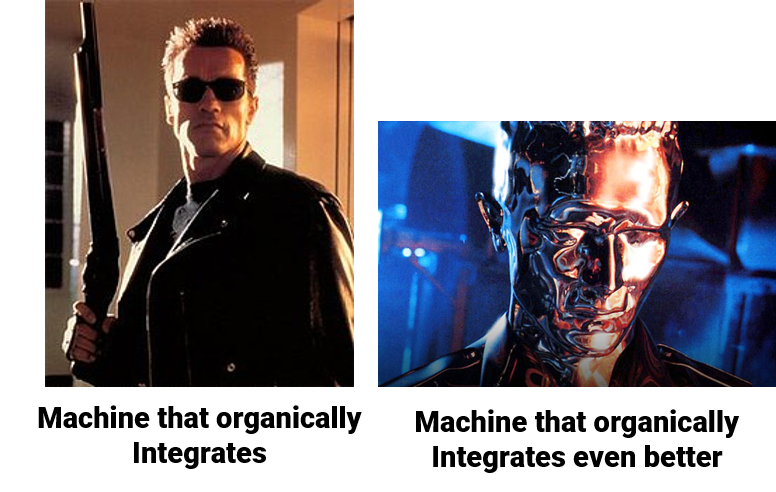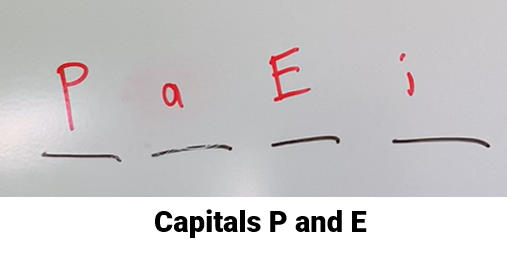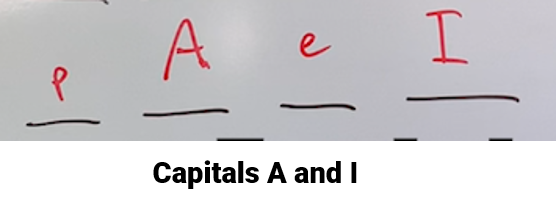Work Models You Need to Know Ep. 1 – The Four Managerial Roles of Ichak Adizes
Want to watch the video of this? Just click here!
Today’s article is the first in a new series called “Work Models You Need To Know”. In this series I describe and summarise in each instalment one of the models that I find useful to help my clients understand certain issues that are in their organisation, and what to do about it.
This time, it’s the Four Managerial Roles, and it’s from Dr. Ichak Adizes, an organisational consulting legend who has been in the game for decades.

Dr. Ichak Adizes
Adizes is best known for the Corporate Lifecycle, a fantastic model on how enterprises come into existence, how they grow toward what he calls ‘Prime’, and then how they can decay and sometimes even die. It looks like this:

He has written too many books to count, and wonderfully is willing to continually update his own thinking and models as his experience develops. With over five decades of work, and still going strong, this is a huge base, and his Adizes Institute which provides training, publishing and consulting is worldwide.
The Four Managerial Roles
A key part of Adizes’ work is what he calls the Four ‘Managerial Roles’, which is the focus of this article. These stem from the deceptively simple concept that organisations needs to be both efficient and effective…in both the short and the long term.
Here’s how I draw the model….

As you can see, it’s the classic consultant’s four-box model, with effective, efficient, short and long-term all on board. Each quadrant represents a ‘Managerial Role’ for an organisation to be viable now and in the future, and Adizes gives each of them a great name, which you can see in the diagram.
Produce – means we are effective in the short-term, giving a customer what they want…now. What we might not be concerned as much about, however, is how much it costs. Whether we are actually making a profit. That’s why we have….
Administering – which means we are efficient in the short term. Adizes uses a great analogy of a tennis player – getting the ball back any which way is effective. But can be tiring. If, however, we learn some technique, some consistency of process, we can use less energy each time. More resources available means we can be more effective for longer. It’s a brilliant analogy.

Producing and Administering combine for a viable business in the short-term. However, the world continually changes around us, which is where the long-term comes in, and this takes us to our two long-term Managerial Roles.
Entreprenuerial work is what Adizes calls being effective in the long-term. Similar to Producing, it is again about providing for customers, but these customers are tomorrow’s customers. Entreprenuerial work is the action happening now that allow us to produce for future customers. This work has been nicely boxed up in the innovation movement of the past 15 years, and has always been the realm of strategic development. Effectiveness in the long-term, however, will not make for a viable business unless we have…
Integration. As we did in the short-term, we are again referring to not using more energy or resources than we need so we don’t run out. But, while short-term efficiency is about process and consistency, long-term efficiency is about integrating the organisation so it can hold together as it changes. An integrated organization that is more organic, where relationships are strong, where people have trust, is able to move towards a new future easier than one that is mistrustful and moribund by a bunch of rules and regulations that no longer work.

So they are the four managerial roles we need – Produce, Administer, Entreprenuer and Integrator.
Natural Enemies
Now, here’s one of the genius aspect to the model. Adizes points out that we have natural enemies. Look at the arrows in the diagram below:

The big ones are diagonal, across both time and efficiency/effectiveness. Sort of like opposites. Producing and Integrating are in natural conflict – , “I don’t care what is costs and who it annoys, we need to get it done” vs “Whoa, hold your horses, that’s going to upset a lot of people, let’s talk to everyone and get people on board.”
The other diagonal – Entrepreneur says, “Let’s go and do it the new thing. Why not? It will work! Let’s spend, I mean, invest the money now.” The Administrator naturally responds with “Whoa, if you do that, we’re going to run out of money, and we have a process for that sort of thing anyway.”
There is also conflict sitting between different time horizons of efficiency and effectiveness (horizontal in my graph). Take Produce and Entrepreneur. To get ready for tomorrow, it means we’ve got a little bit less attention on today. Natural tension.
Administer and Integrator? We’ve got ‘follow the rules with no allowances because the rules work’ versus the need to ‘change the rules and flex for the individual so we can all connect and be more human’. Administer wants to make sure the rules are followed because the rules mean you will be efficient now.
And of course, tension between being efficient or effective in the same time horizon, the vertical arrows in my drawing. Entrepreneurial work by nature is about changing things and getting rid of some of the old, and this doesn’t always go well with Integrating because there’s going to be loss. Usually emotional.
Finally the most traditional battle – the Producer want to deliver for this particular customer in this circumstance right now, and the Administrator is forced to explain (for what feels like them the thousandth time) “If you serve all customers like that, we’re going to run out of money.”
Conflict and tension. The key that Adizes points out is that it’s all natural.
Take Your Vitamins
Then Adizes takes it even further. This is the part I love. He refers to each managerial role as a necessary ‘Vitamin’ for the organisation to be healthy, then he gives us a nomenclature to show which vitamins are present. He does it like this:

Each vitamin is represented using it’s letter, with a capital indicating that, if we are talking about an individual, it’s a particular strength of theirs. It comes naturally to them. Small letter simply means “Yes, it exists.” Take the one from above again:

This is a classic profile of someone who has a natural strength in getting stuff done today (P), as well as moving towards tomorrow (E) . In other words, they’re effective, but have no natural strength in being efficient. To them, rules and the need to manage the impact of change are annoyances. Necessary evils. They can do it, but only in service of P and E. The risk here is that we effectively go off a cliff, either through running out of cash, or people who want to work there!
Here’s another profile.

Here we have a small ‘p’ and a small ‘e’ and a big ‘A’ and a big ‘I’. This person is strong in making sure the show runs efficiently, as well as helping everyone to stay integrated and onboard and connected to each other. What’s the risk? We might not actually meet customer needs, either today or tomorrow, because we are too focussed on getting it right internally. Adizes would describe this as having a perfect tennis forehand…but one that only works if the ball is exactly where we want it.
How To Get All Your Vitamins
Here’s the trick…Adizes clearly states that he has never, in all of his decades, seen someone who is strong in all four vitamins. No one. And….it’s a rare person that has strengths in three. What he sees a lot of are very good leaders who have a strength in two, and competent leaders can sometimes have a strength in just one.
And all competent leaders at least have small letter in the ones where they don’t have natural strength so they can at least learn to respect that view.
The trick is to make sure that a given team has members such that all four roles have a capital letter when viewed as a team – that four each vitamin, at least one person in the room has a natural strength. It looks like this:

(How do you find this out? The Adizes Institute has a test on their website, and, of course, the simple yet usually accurate way is to ask everyone to give their view on what everyone else has. (And by the way, if your view of yourself disagrees with what the others say about you….they are not the ones who are wrong))
Now, if you’re missing a strength in a Vitamin, it doesn’t mean that the team has to be disbanded. You do, however, want to consider this when the opportunity arises to recruit new members, and until then, call in perspectives from outside the team to make sure all Vitamins are on board. This matters, because if, for example, you’re lacking E in the team, the team will naturally focus on today and remember to make sure that everyone stays connected, but it find what seem like logical reasons to not move toward a future that is needed for future viability and/or success. And you can see how the same can apply with the other three Vitamins.
Why Mutual Trust and Respect Matters
What brings us all together? This is where the work of Adizes is so strong as he provides a basis for why mutual trust and respect is a requirement for business success, not just a nice thing. He uses the specific acronym M.T.R. to get it locked in. A team that has mutual trust and respect, instead of getting pulled apart by these conflicts, harnesses them to make better decisions. In fact, at times, the viability of the organisation can depend on this ability to harness.
The Four Characters
And here’s the last bit that’s great fun as well as helping us make sense of things. Adizes describes what it looks like where someone is completely lacking three of the four vitamins.
The Lone Ranger

Take someone who is all P. Not even borderline competence or care about the other three roles. Adizes calls them the Lone Ranger. Remember, they mean well. With genuine belief they are serving the greater good they’ll say “Bugger it, I’m going to go alone here and just do it and things will work out.” Forgiveness rather than permission.
The Bureaucrat

What about someone who is all A and none of the others? Adizes calls them the Bureaucrat because they’re all about making sure the rules get followed, regardless of whether customers get served at all, or whether our lack of changing could see us go under.
Remember, people mean well. They genuinely believe this is the best way to go forward. Don’t get angry at them.
The Arsonist

What of someone who is E and nothing else? The term here is the Arsonist. You know you’re dealing with an arsonist when you get the classic, “I’ve just come back from holiday and here’s the book I’ve read and let’s go and do it” without no consideration of what that would actually mean. When the Arsonist faces externally, we here about what we “should” be investing in and moving toward. When the other Vitamins then come into conflict with this, rather than harnessing the conflict, those opposed are positioned as ‘resisting change’ and ‘stuck in the detail’. (And they are not always wrong).
The Super-Follower

And the person who is all I and no other Vitamins? The Super-Follower. This person is more concerned with everyone staying connected and getting along than whether we produce anything, follow necessary rules, or try anything new.
Now, don’t start labelling people. You’ve got a bit of all of these characters in you, and remember there is more than half a chance you’re actually seeing your own darker side in other people when you feel the need to frown at their own tendencies. We all do this.
The idea here is to be able to harness the strengths, the Vitamins that we all bring, and make sure that we have around the table all four Vitamins so we can have an organisation which is effective and efficient in the short and long term.
Which is all we’re ever really trying to do!
Mutual Trust and Respect Reprise
The key to accessing all the Vitamins is MTR – mutual trust and respect. Which means you’re going to have to do some of the hard work of actually learning how to get along and respect each other. And how do we know it’s hard work? Just look at the avoidant reactions that pop up in your own mind when these things are suggested.
Jokes about kumbaya anyone? Campfire?
That’s why I use a process of showing groups a new way to talk about the work system as the foundation, with the required dives into ‘what’s really going on between us here’ occurring as needed. The ‘work system’ can sometimes end up being a trojan horse for the real work, which is learning how to harness the natural conflicts rather than avoid them.
Adizes is brilliant. What I’ve been able to learn from his numerous books has been of so much value to my clients over the years. Do yourself a favour and get the book Managing Corporate Lifecycles.
That’s all for now.
If you’d like next steps on how these ideas can combine with others to practically help your organisation, you just need to get in touch by clicking here.
